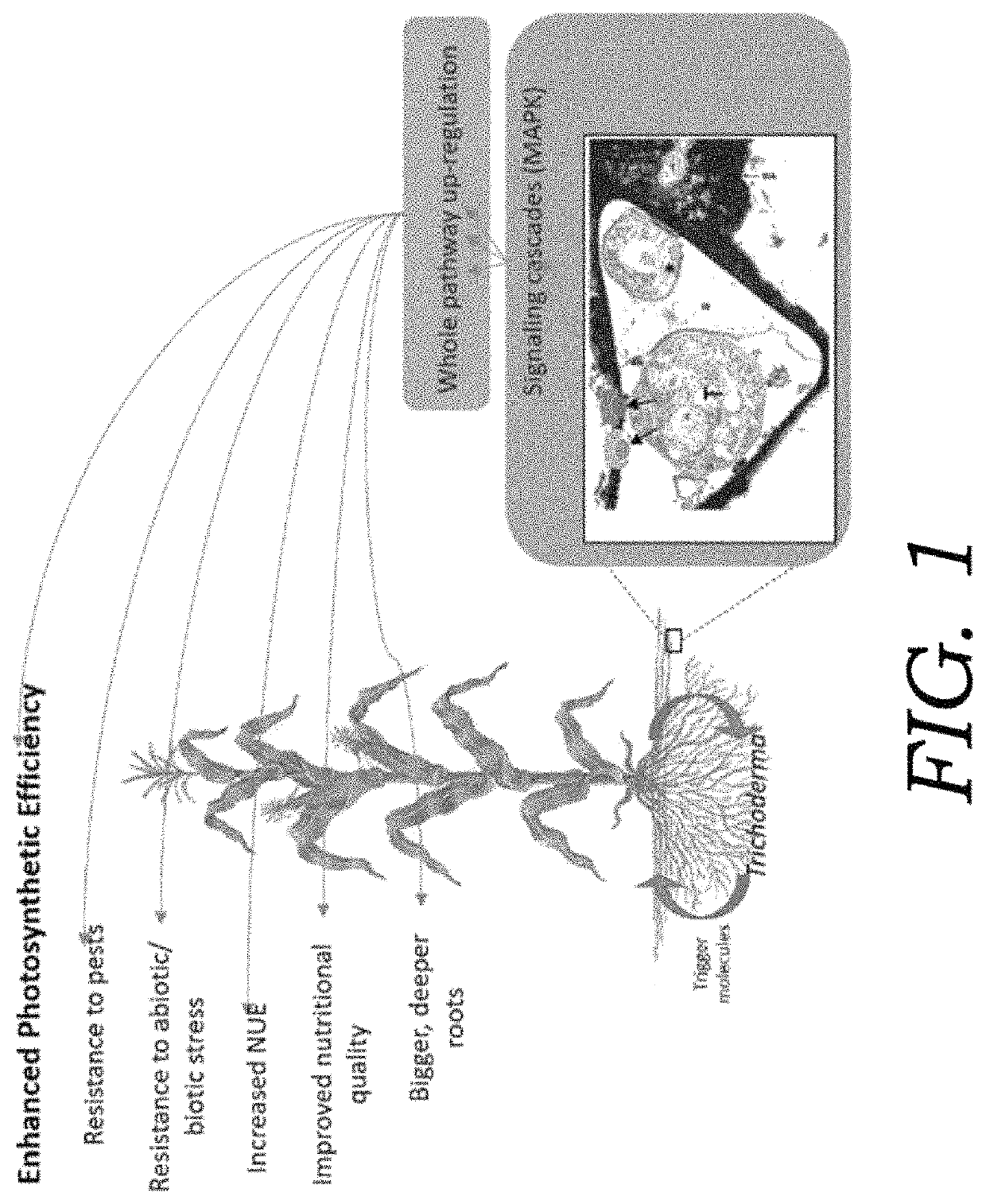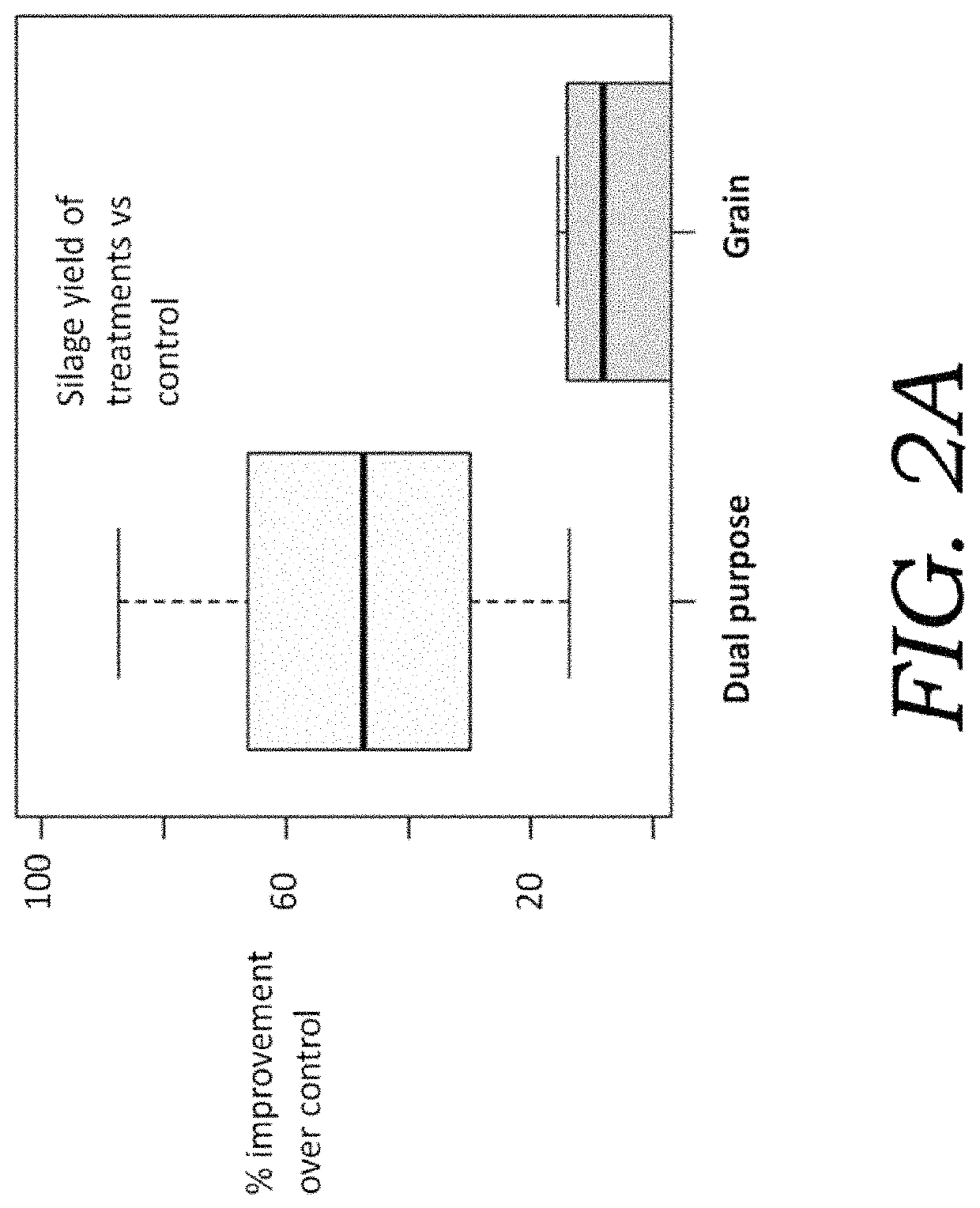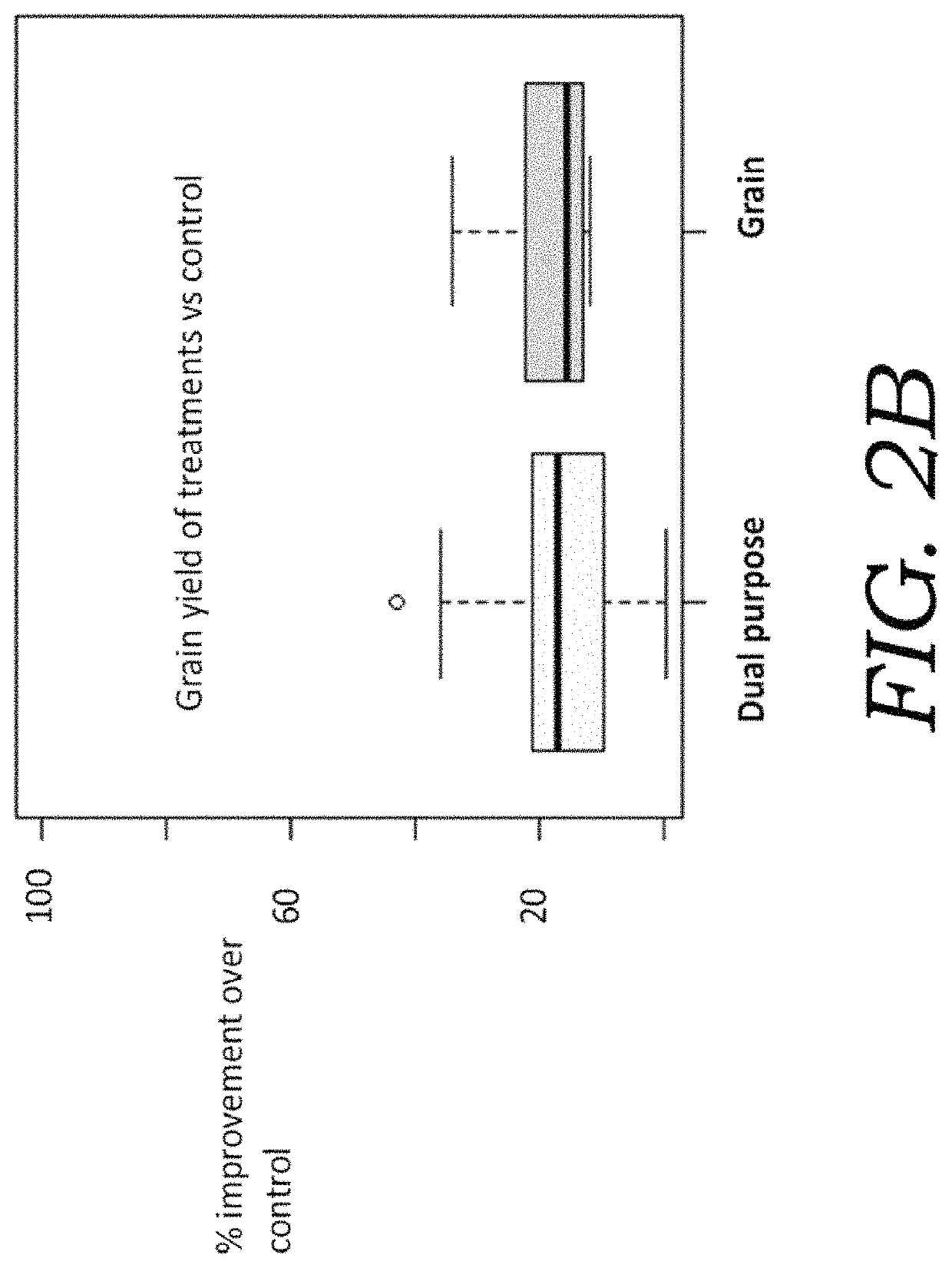Endophytic microbial seed treatment formulations and methods related thereto for improved plant performance
a technology of endophytic microbial and seed treatment formulation, which is applied in the direction of biocide, lighting and heating equipment, heating types, etc., can solve the problems of limiting crop production, reducing land areas suitable for cultivation, and reducing the leaching of nitrates and nitrites into the ground water
- Summary
- Abstract
- Description
- Claims
- Application Information
AI Technical Summary
Benefits of technology
Problems solved by technology
Method used
Image
Examples
example 1
[0118]Colonization of germinating corn seeds by Trichoderma strains—Corn seeds treated with spores of Trichoderma strains K1−K5 and germinated on blotter paper showed clear differences in timing and vigor of germination. Total DNA isolated from either seed washings (ungerminated seeds) or roots from germinated seeds was used for qPCR detection of Trichoderma over the germination time course. All strain enhanced the growth rate of Trichoderma on germinating seeds. In particular, strains present in the seed treatment product SABREX LQ for corn, K2 and K4, peaked by 24 hours post imbibition from 1000 to 10,000 fold from 0 hours post imbibition. While the study reported here only extended to three days post imbibition, the qPCR data suggests an early peak in biomass followed by a decline to very similar levels by all strains. We speculate that this may be due to the system reaching a homeostatic point at or around this time wherein the plant root has reached a carrying capacity for endo...
example 2
[0119]Effects of strains K1−K5 on stressed tomatoes—The conditions of water and salt stress were relatively severe, although nonlethal, and decreased growth of tomatoes substantially. Plants in the absence of the Trichoderma strains and water or salt stress were only 60-65% as tall as those grown without stress. The presence of the Trichoderma strains, which are confined to the roots, reduced the growth reduction. For example, plants in the presence of the mixture of strains K1−K4 were 35% taller than similar plants without the strains when under water stress, while plants with the organisms under salt stress were 19% taller than ones with the stress in the absence of the organisms. Most of the microbial treatments gave an increase in plant height under stress relative to the nontreated stressed control; however, the older strain T22 was very similar to the control. In the absence of stresses, there was no difference in the height of tomatoes treated with the organisms.
[0120]Example...
example 5
[0123]Field experiments GH14—Field trials of several seed treatment microbial mixtures and formulations were conducted. These trials recorded a number of variables. First, plant heights were measured at two different times; on August 5, just before tasseling, there was a large difference (116 cm in the control vs about 150 cm for the most promotive treatment) but by the time of harvest, there was no difference (See Table 1). The difference is that corn is genetically programmed to about a certain height but the stem diameter and general robustness of the plant reflects this early growth advantage. Roots are also much larger and more robust with the most effective strains used as seed treatments. This increase in above-ground plant robustness resulted in an increase of more than 10 t / ha in total biomass (silage) at the time of harvest (just after the second plant height measurement), or just a little more than a 30% increase in plant biomass (silage). However, the grain yield increas...
PUM
 Login to View More
Login to View More Abstract
Description
Claims
Application Information
 Login to View More
Login to View More - R&D
- Intellectual Property
- Life Sciences
- Materials
- Tech Scout
- Unparalleled Data Quality
- Higher Quality Content
- 60% Fewer Hallucinations
Browse by: Latest US Patents, China's latest patents, Technical Efficacy Thesaurus, Application Domain, Technology Topic, Popular Technical Reports.
© 2025 PatSnap. All rights reserved.Legal|Privacy policy|Modern Slavery Act Transparency Statement|Sitemap|About US| Contact US: help@patsnap.com



